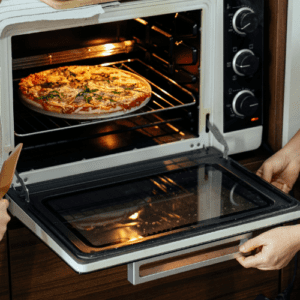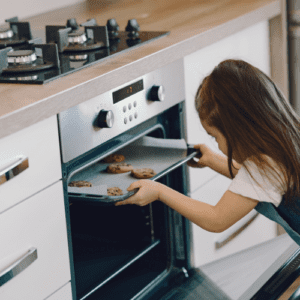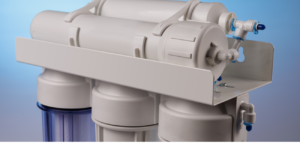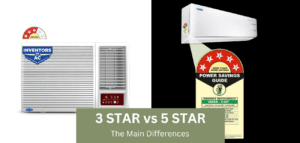For kitchen renovations, you typically have two options: a conventional oven or a convection oven. You have certainly encountered these terms while perusing online kitchen supply stores, but what exactly is the distinction between the two? After reading this post, you will have a clear mind when choosing between convection and conventional ovens. Keep reading.
What Is a Convection Oven?
A convection oven has an additional fan and exhaust system, which a normal oven lacks, and circulates hot air throughout the oven while the food cooks. This ensures uniform heat distribution throughout the oven.
Convection cooking uses less energy than conventional ovens. The air circulation allows you to cook at a lower temperature and minimises cooking time. Furthermore, the oven will preheat much faster than a traditional oven.
A convection oven usually features a convection mode that activates the fan, allowing you to use it as a regular oven. When baking flan or quick bread, avoid the convection setting since the airflow causes a dry top.
What Is a Conventional Oven?

A typical oven, also known as a standard oven or traditional oven, is prevalent in home kitchens. The heating element, or heat source, is often situated at the bottom of the oven, with the grill on top. The lack of circulating air within the oven cavity can result in hotspots. Food placed closest to the heat source cooks faster than food placed farther away.
If you already have a standard oven and want to enjoy the benefits of convection cooking, such as shorter cooking times, without having to buy a new oven, consider acquiring a smaller countertop toaster oven combination device.
Some include a convection option or an adjustable fan speed. If you want to optimize your kitchen setup further, you might also look for the best microwave in India that complements your cooking needs.
Main Distinctions Between Convection And Conventional Oven
Both convection and conventional ovens cook food by heating it to a specific temperature. The most significant difference between the two ovens is how the hot air is circulated within the oven cavity. Here are some other differences between convection and microwave oven.
Energy Efficiency
Food cooked in a convection oven cooks approximately 25% faster than it would in a conventional oven because of the constant heated airflow. A conventional oven takes longer to preheat.
ALSO READ: Unveiling The Best Electric Kettles in India – By Top Brands
Heating Elements
A convection oven features a heating element that cooks food at a certain temperature and a big fan. A conventional oven has a set heating source that allows you to control the temperature.
Heat Circulation
As previously stated, the primary difference between conventional and convection ovens is how heat is circulated. A convection oven has a fan that constantly circulates air within the oven cavity. Because air is constantly circulated, convection ovens create considerably more consistent and even heat than conventional ovens.
Both conventional and convection ovens can be heated with electricity or gas, but the heat distribution varies. A normal oven’s heat source is fixed, typically emanating from a heating element at the appliance’s bottom. In contrast, a fan circulates hot air in a convection oven.
Because there is no fan to compel the air to flow throughout the oven cavity, classic ovens use passive circulation. In a typical oven, passive airflow can cause uneven heating, particularly if the heating element on top heats at a greater temperature than the lower element.

Moisture
Moving air in a convection oven generates a drier environment, allowing for crispy coatings on everything from French fries to roast chicken.
In a typical oven, you can increase browning by using more fat (such as olive oil or butter) or flipping the pan many times during cooking.
Cost
The next thing is to consider the convection and conventional oven cost. Regular ovens are typically less expensive than convection ovens, making them an excellent choice if you are on a tight budget.
However, one of the most significant distinctions between traditional and convection ovens is their energy consumption. Convection ovens require substantially less energy. So, you should expect cheaper energy bills when you use convection versus conventional.
Oven Capacity
A convection oven’s air flow allows you to place foods on both oven racks. For example, when baking cookies, you can place multiple baking sheets in the oven at once.
The air circulation guarantees that they cook evenly without requiring you to rotate them. In a conventional oven, you must switch the sheet pans halfway through cooking; otherwise, the bottom pan will receive more heat than the top pan.
Bottomline
Given all of their benefits and drawbacks, the best decision between convection ovens and conventional ovens is the one that best suits your cooking style. If you have a busy home and are not into delicate baking, the speedier cooking times and increased efficiency of a convection oven may appeal.
In contrast, a skilled baker with specific recipes or a family with fewer time constraints and a tighter budget may prefer a conventional oven.
OTHER BLOG POSTS







